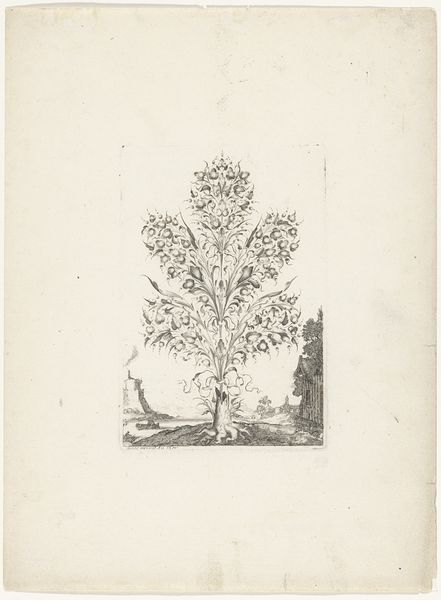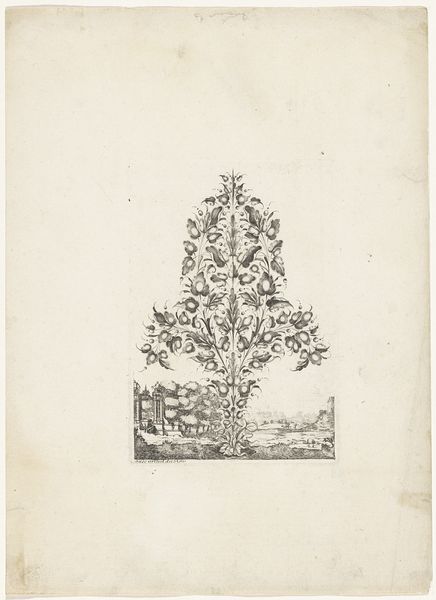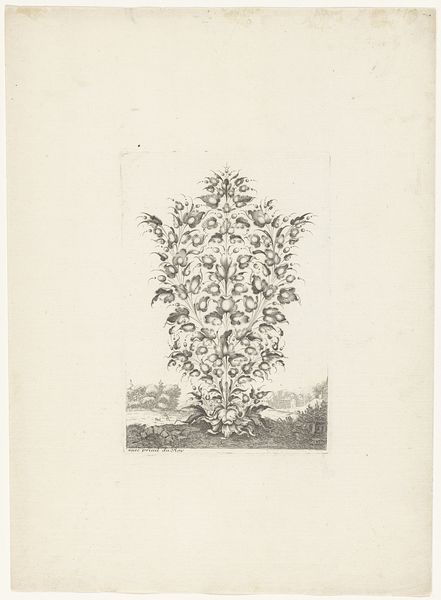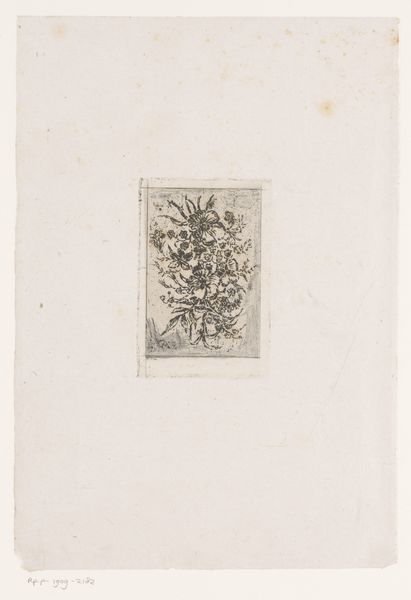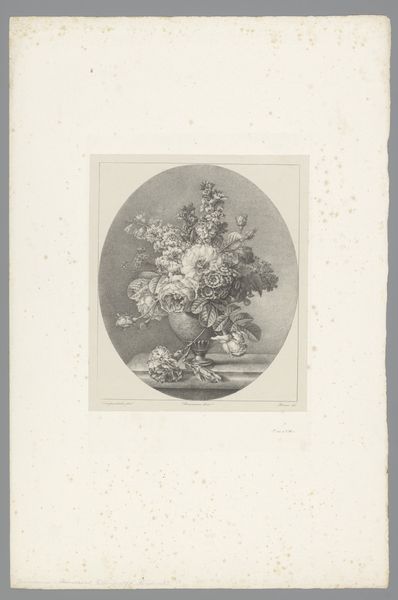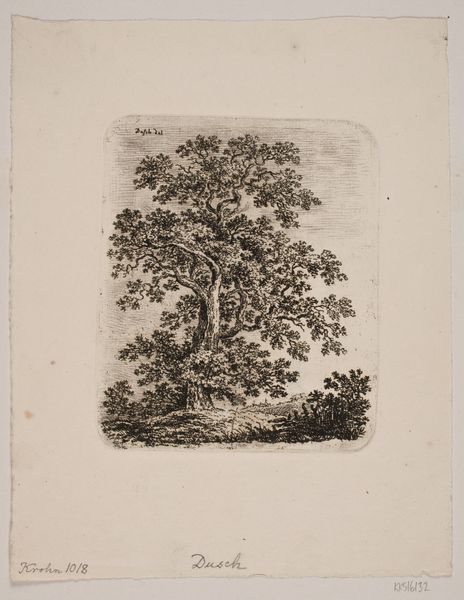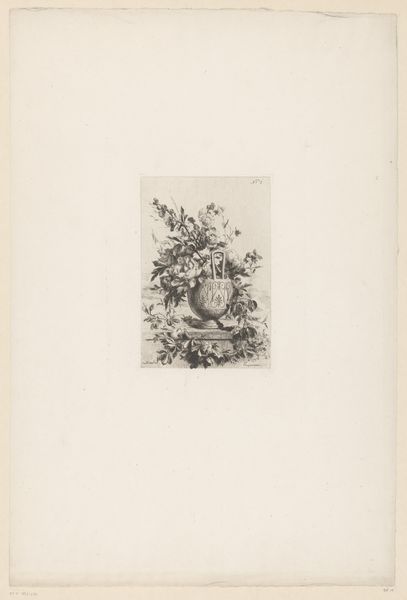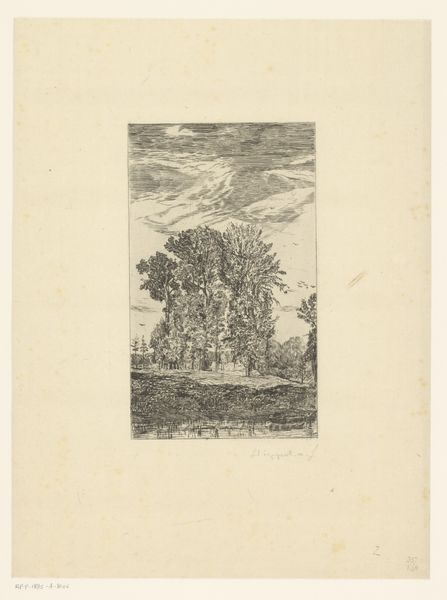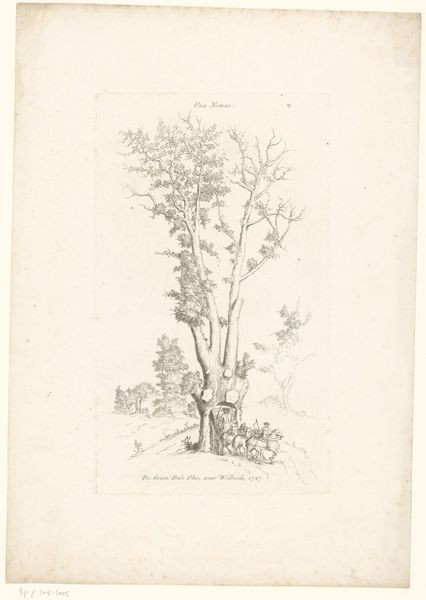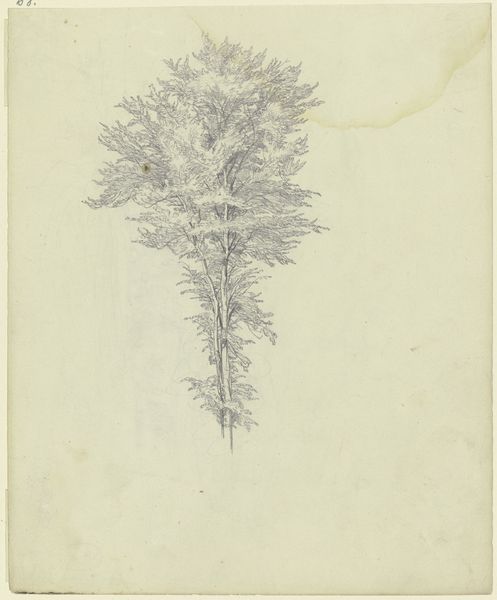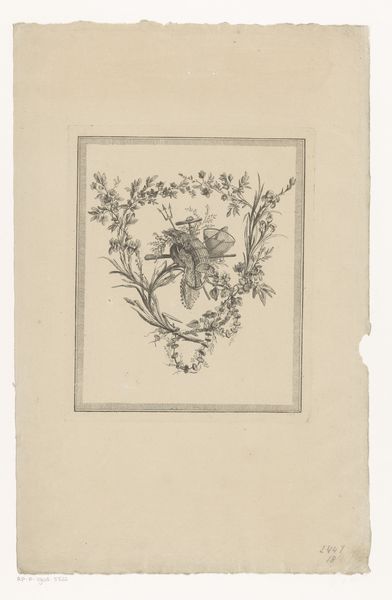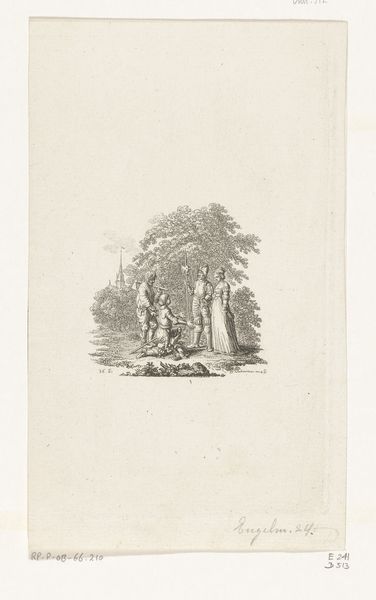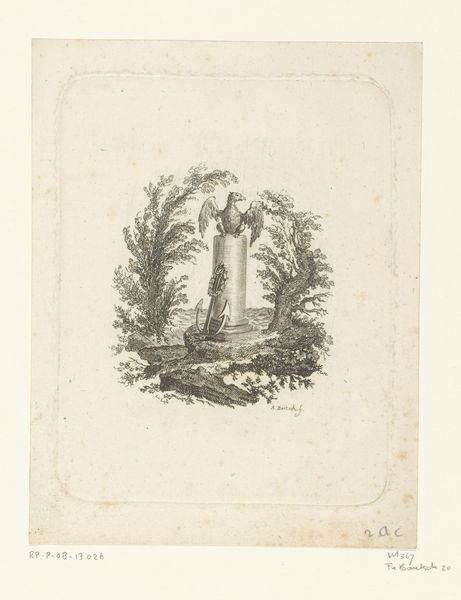
drawing, graphic-art, print, etching, engraving
#
drawing
#
graphic-art
#
baroque
# print
#
etching
#
etching
#
line
#
engraving
Dimensions: height 144 mm, width 101 mm
Copyright: Rijks Museum: Open Domain
Editor: This etching, "Edelsmidboeket in de vorm van een ovaal," was created before 1647 by Gédéon Légaré. It depicts an oval-shaped bouquet resembling jewelry. It’s strikingly symmetrical, and almost feels like looking at a blueprint, despite being an artwork. What's your take on this piece? Curator: It’s a fascinating piece when viewed within its historical context. Remember, printmaking served not only artistic purposes, but was also vital for disseminating designs, especially for crafts. A bouquet of jewellery might seem purely decorative, but it suggests the rise of mercantilism. Can you see how the composition mimics the idealized forms popular during the baroque period? Editor: I see it now. The overall symmetry and those stylized floral elements do scream Baroque. But how does that tie in with mercantilism? Curator: Think about who commissioned and consumed art like this. Aristocrats, yes, but also a burgeoning merchant class. Prints like these could advertise a goldsmith's inventiveness and the abundance of materials available through trade, all while showcasing the artist's technical prowess, reinforcing ideas of taste and refinement tied to wealth. What strikes you about the fact it mimics jewelry, despite being botanical in nature? Editor: I hadn't really thought about it like that, but you're right. It suggests that wealth is somehow 'blooming' from somewhere. Perhaps like a 'tree of money' concept? It definitely is more complex than just a simple flower design! Thank you, I've certainly got more context. Curator: And I appreciate your fresh perspective on the work as more than just a 'simple flower design', reminding us how art actively shapes and is shaped by socio-economic conditions.
Comments
No comments
Be the first to comment and join the conversation on the ultimate creative platform.
